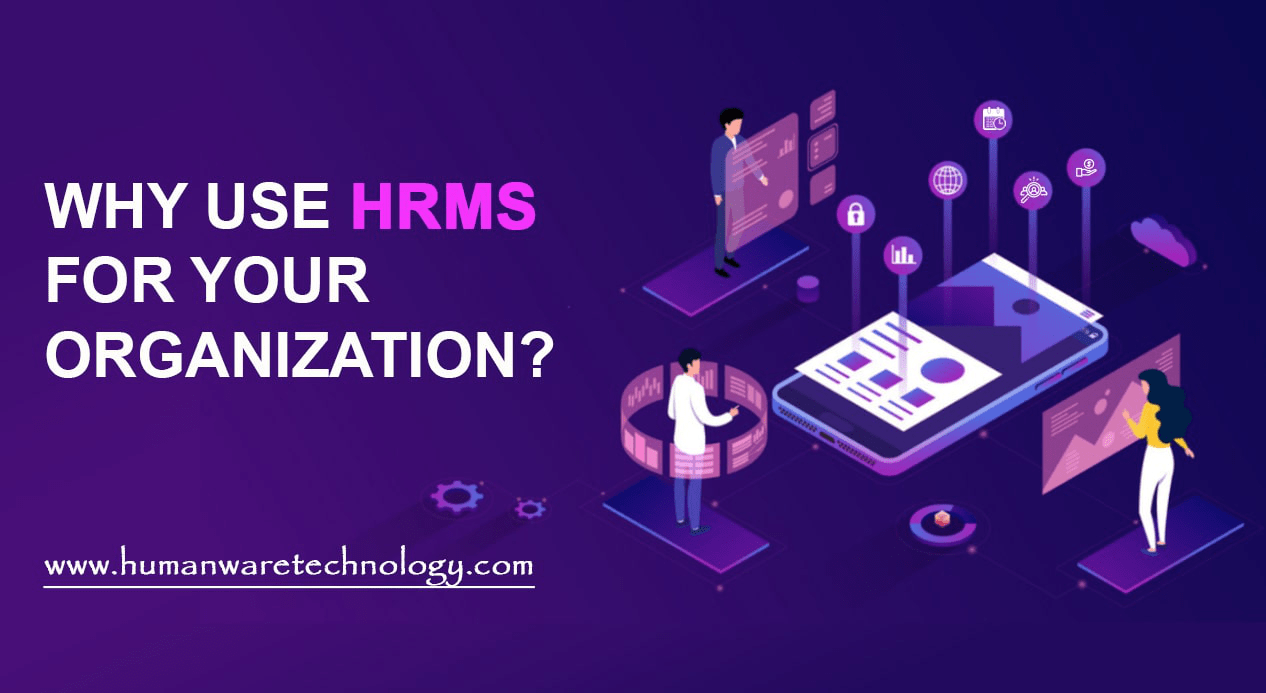
Why Use HRMS For Your Organization
Human Resource Management System (HRMS) refers to the use of software to automate end-to-end HR functions in your organization, and eliminate repetitive tasks to lighten the burden on the HR department. While the HR department focuses on the essential tasks of organizations and on building relationships with employees to ensure employee satisfaction, a valuable HRMS will help to manage certain essential HR tasks simultaneously. Like managing employee attendance, managing leaves, employee training and development, and their payroll.
1. Centralized and Easy Storage of Employee Data
Descriptive analytics is the process of using active and historical data to identify trends. It’s the most basic and simplest level of analytics. Organizations often spend most of their time at this level, thinking about dashboards and why they exist: to create reports and present what happened in the past. It's a vital step in the world of analysis and decision-making, but it's really only the first step. It is important to go beyond the initial observations and to delve into the ideas, which constitute the second level of analysis.
2. Improved Data and Efficient Management
An HRMS can not only manage all employee data but also benefit information such as enrollment and status changes. Everyone working in HR relies on a centralized set of files. Data management becomes simpler and increases team productivity. Many HRMS systems also include recruiting elements such as CV and candidate management. Many companies choose to opt for full HRMS integration with payroll, other financial software, accounting systems, intranets, and other online programs. With an HRMS, you can bring all the necessary HR functions together under one roof. You do not need to manage multiple systems to use different functions. Managers and HR staff can focus on their core business functions in order to motivate employees to achieve KPIs and achieve strategic goals, as they don't waste unnecessary time on complex or personalized HR processes.
3. Employee Self-Service
An HRMS manages not only all employee data but also benefits information, such as enrollment and status changes. An HRMS allows employees to update their data without having to involve HR in simple tasks such as checking remaining leave and monthly attendance. This frees up HR professionals' time for more strategic roles that include building relationships and ensuring employee satisfaction to help retain the company's most important assets. Additionally, managers treat employees equally or impartially. The inconsistencies of approach and the variations according to the HR manager or the consultant with whom you deal are no longer relevant.
4. Measuring Effectiveness
It is true that employees are the greatest asset of a business. However, it is also important to measure operating costs and compare them to the resulting benefits, to assess the return on investment. Measuring the effectiveness of sales, new hires, compensation, benefits, and management costs is a step towards better decision-making for the future of the company. As the saying goes, "what can’t be measured can’t be done". So, if businesses don't have an HRMS, they likely won't have access to the data they need at their fingertips for future growth.
5. Employee Training and Development
HRMS systems are used to implement and monitor employee development programs. Objectives and Key Performance Indicators (KPIs) of individuals, as well as teams, can be easily tracked against business goals. Employees can work to achieve company objectives and goals when it is clearly communicated to them. The HR or manager can assign the employee training which is required for the employee to perform better. And better develop his skills. And this training also builds a team spirit that makes the dream work done. HRMS provides more communication options in the workplace and helps break down old barriers, further increasing the potential for teamwork; especially for virtual teams operating in multiple physical locations. In addition, they also speed up the process of forming newly created teams or integrating new workers into an existing team. It helps onboard new talent and facilitates the connection between team members and helps to complete team projects in a timely and efficient manner.
6. Report and Analysis
Personalized leadership and management reports can be performed while you work anywhere, whether at home or in the office. For example, a manager can search employment data by location and can do so without contacting HR to get the necessary details. Managers can access information when needed, regarding employee development, performance improvement, and employee pay or other benefits. Manual timesheets and mechanical punching are a recipe for mistakes and can lead to fraud as well.
7. ROI of HRMS
HRIS involves many costs, both obvious and hidden, and these multiply across multiple systems. Improving communication between departments saves costs and time, which may be due to a delay in completing tasks or the success of a combined project. Since an HRMS includes a variety of functions, the company saves time and money to include HR to do the same job. An HRIS contributes to the empowerment process of employees, helping them to manage and control their tasks individually, with the help of managers whenever necessary. He does not need anyone to keep him under constant control and this creates a feeling of trust in the process of the organization. Bridging the gap between employees and the company is a step forward in terms of building a successful and sustainable workforce. It is therefore clear that the use of HRMS offers a good return on investment.
Conclusion
Every business can benefit from using HR software. Businesses are trying a new approach to manage their employees and engage them in the organization. using an HRMS software HR can gauge the pulse of the business. Humanware HRMS is an end-to-end HRMS software that covers all your hr functionality on one unified platform. With Humanware HRMS software make all your end-to-end hr software paperless by full automation.